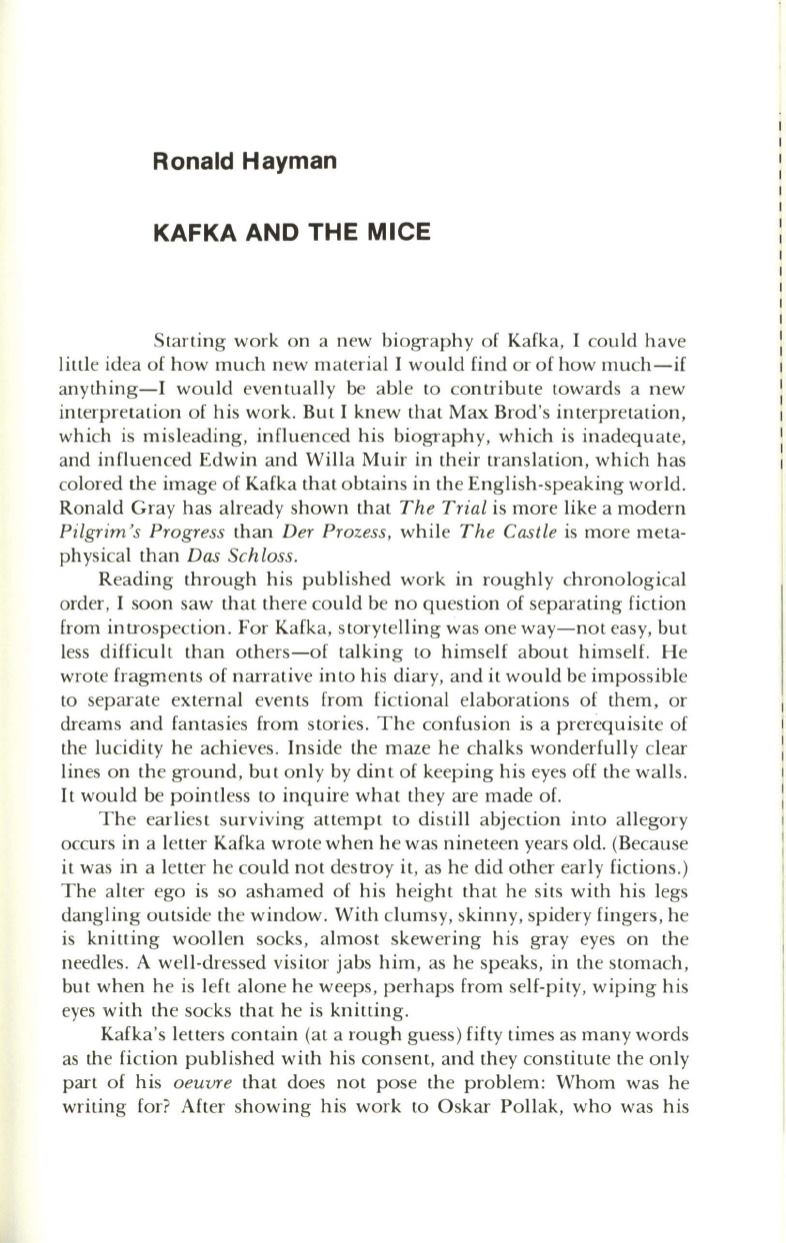
Ronald Hayman
KAFKA AND THE MICE
Starting work on a new biography of Kafka, I could have
little idea of how much new material I would find or of how much-if
any thing-I would eventually be able to contribute towards a new
interpretation of his work. But I knew that Max Brod's interpretation,
which is misleading, influenced his biography, which is inadequate,
and influenced Edwin and Willa Muir in their translation, which has
colored the image of Kafka that obtains in the English-speaking world.
Ronald Gray has already shown that
The Trial
is more like a modern
Pilgrim's Progress
than
Der Prozess,
while
The Castle
is more meta–
physical than
Das Schloss.
Reading through his published work in roughly chronological
order, I soon saw that there could be no question of separating fiction
from introspection. For Kafka, storytelling was one way-not easy, but
less difficult than others - of talking
to
himself about himself. He
wrote fragments of narrative into his diary, and it wou ld be impossible
to
separate external events from fictional elaborations of them, or
dreams and fantasies from stories . The confusion is a prerequisite of
the lucidity he achieves. Inside the maze he chalks wonderfully clear
lines on the ground, but only by dint of keeping his eyes off the walls.
It would be pointless to inquire what they are made of.
The earliest surviving attempt to distill abjection into allegory
occurs in a letter Kafka wrote when he was nineteen years old. (Because
it was in a letter he could not destroy it, as he did other early fictions.)
The alter ego is so ashamed of his height that he sits with his legs
dangling outside the window. With clumsy, skinny, spidery fingers, he
is knitting woollen socks, almost skewering his gray eyes on the
needles. A well-dressed visitor jabs him, as he speaks, in the stomach,
but when he is left alone he weeps, perhaps from self-pity, wiping his
eyes with the socks that he is knitting.
Kafka's letters contain (at a rough guess) fifty times as many words
as the fiction published with his consent, and they constitute the only
part of his
oeuvre
that does not pose the problem: Whom was he
writing for? After showing his work to Oskar Pollak, who was his


